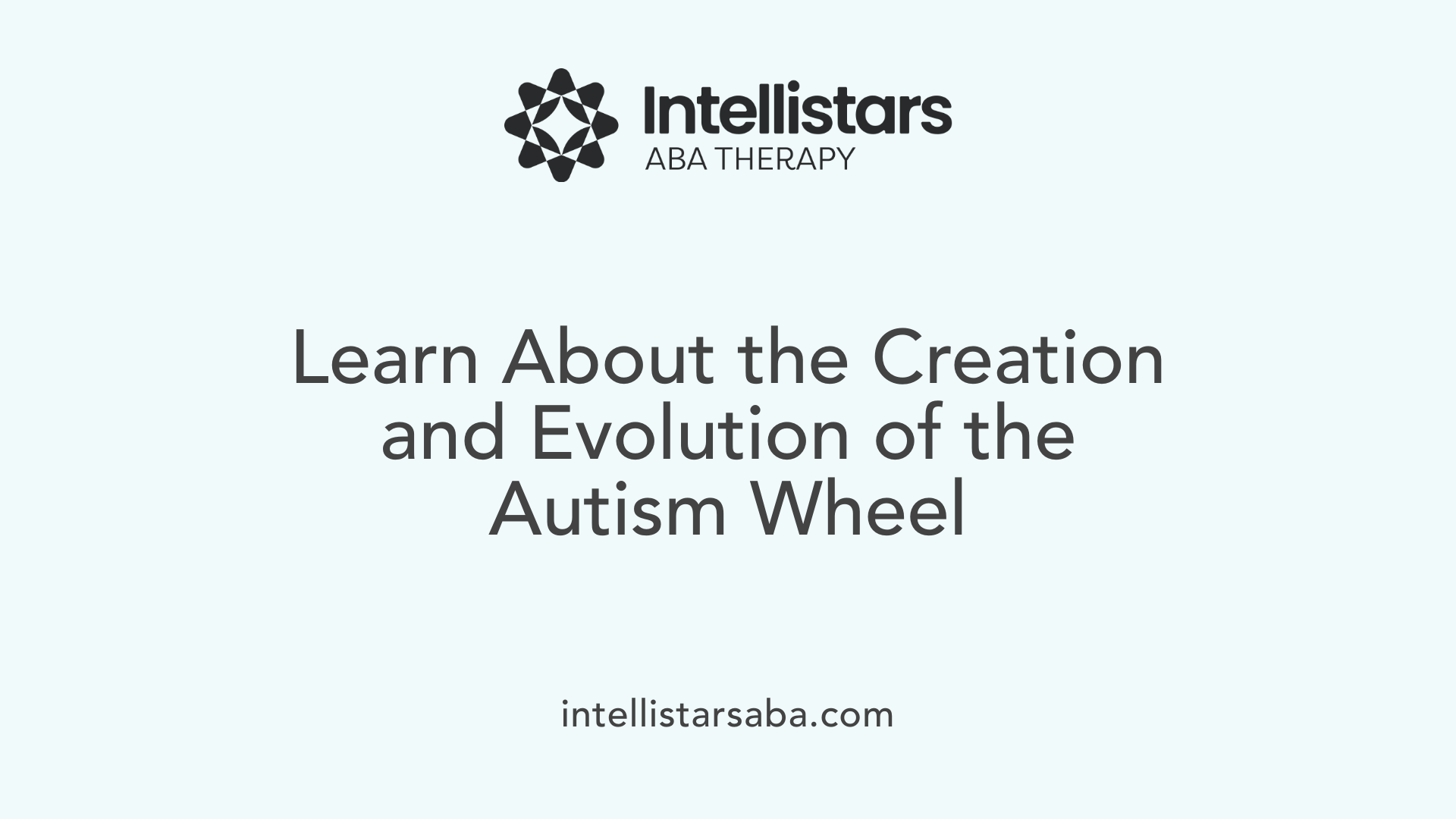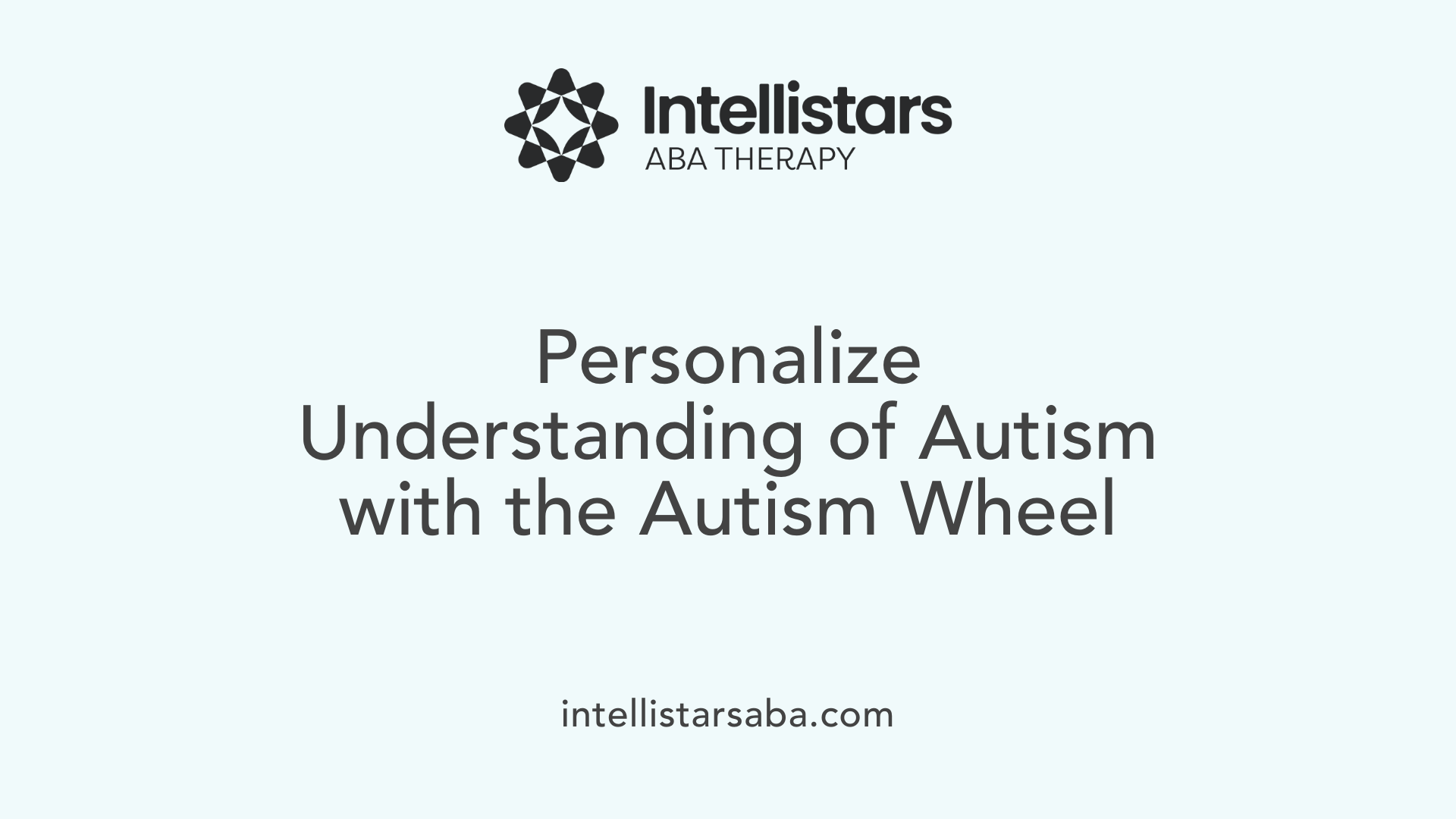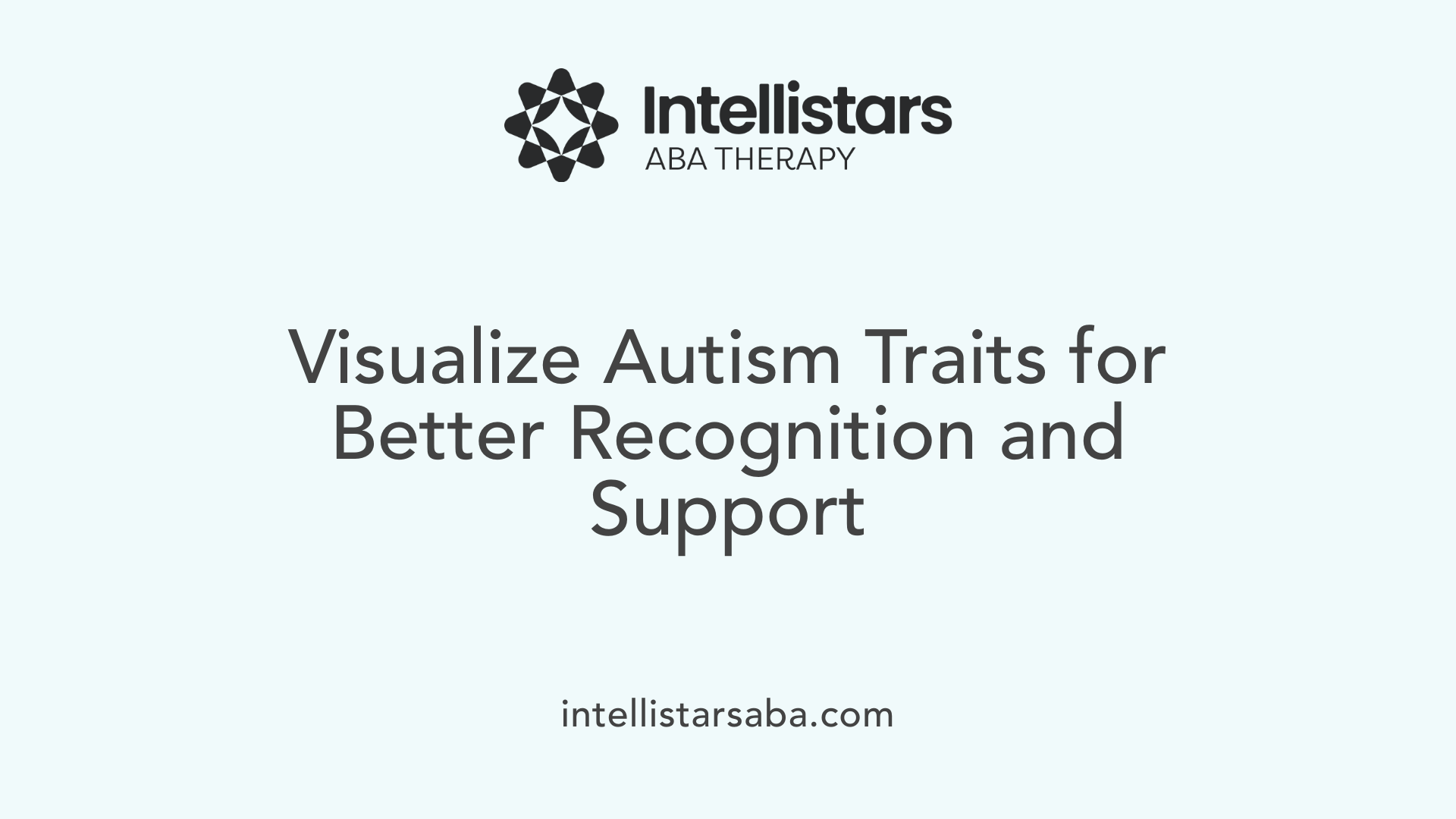Understanding a New Model for Autism Spectrum Diversity
The landscape of autism understanding continues to evolve with innovative tools that capture its multifaceted nature. Among these, the Autism Wheel stands out as a pioneering visual and conceptual framework that offers a comprehensive way to view, understand, and support individuals on the spectrum. Moving away from traditional rigid models, it embraces the diversity and fluidity of autistic traits, providing nuanced insights for caregivers, professionals, and individuals alike.
What Is The Autism Wheel and Its Purpose?
What is the Autism Wheel and what is its purpose?
The Autism Wheel is a detailed visual representation designed to illustrate the wide range of traits and characteristics associated with autism. Unlike traditional views of autism as a linear spectrum, this tool presents a multidimensional framework that highlights the various domains where autistic traits can manifest.
The wheel breaks down autism into several interconnected categories such as social communication challenges, sensory sensitivities, repetitive behaviors, emotional regulation issues, and co-occurring conditions like anxiety or ADHD. Each domain is represented as a spoke in a circular diagram, with scales indicating the severity or frequency of traits. This approach shows that autism is not simply a matter of functioning levels but a collection of diverse traits that can vary greatly from person to person.
The primary purpose of the Autism Wheel is to foster understanding by providing a holistic view of an individual’s autism profile. It enables caregivers, educators, and healthcare professionals to identify specific strengths and areas needing support. Since each person’s wheel looks different, it emphasizes that autism is highly personalized and that support strategies should be tailored accordingly.
Moreover, the wheel serves as a practical tool for planning interventions, setting goals, and tracking progress over time. It helps in creating personalized strategies, whether in educational settings, therapies, or daily living accommodations. By visually mapping traits, it enhances communication among families, professionals, and the individuals themselves, empowering them with better self-awareness and self-advocacy.
In essence, the Autism Wheel promotes awareness, acceptance, and tailored care, ultimately aiming to improve quality of life and inclusion for autistic individuals. It respects the complexity of autism and underscores the importance of recognizing each person’s unique profile.
Differences Between the Autism Wheel and Traditional Models

How does the Autism Wheel differ from the traditional autism spectrum model?
The Autism Wheel offers a different way to understand autism compared to the traditional spectrum model. The classic spectrum presents autism as a linear line, ranging from low-functioning to high-functioning individuals. In contrast, the Autism Wheel uses a circular diagram to depict various traits associated with autism, including sensory sensitivities, social skills, and special interests.
This model focuses on traits and their severity or impact, which can vary widely among individuals. Instead of classifying someone as simply high- or low-functioning, the wheel shows how each person may experience different traits to different degrees. For example, one person might have intense sensory sensitivities but strong social skills, while another might struggle with emotional regulation but have fewer sensory issues.
This multidimensional view helps to avoid oversimplification and acknowledges that autism is a highly diverse condition. It fosters a better understanding that everyone on the spectrum is unique, with their own combination of strengths and challenges. The visual nature of the wheel makes it easier for individuals, families, and professionals to identify specific needs and tailor support accordingly.
Overall, the Autism Wheel enhances awareness of the complexity of autism, promoting a more personalized approach to understanding and supporting autistic individuals rather than relying on broad labels or the notion of a single spectrum line.
The Origins and Development of the Autism Wheel
 The Autism Wheel was created by Dr. Luke Beardon in 2020 as a response to the need for a more comprehensive way to understand autism spectrum disorder (ASD). Unlike traditional models that tend to view autism along a linear spectrum, often emphasizing levels of functioning, the Autism Wheel offers a circular, multidimensional approach.
The Autism Wheel was created by Dr. Luke Beardon in 2020 as a response to the need for a more comprehensive way to understand autism spectrum disorder (ASD). Unlike traditional models that tend to view autism along a linear spectrum, often emphasizing levels of functioning, the Autism Wheel offers a circular, multidimensional approach.
This model uses interlocking spokes or rings, each representing different areas such as social interaction, communication, sensory sensitivities, and executive functioning. By visualizing these traits on a wheel, it acknowledges that autism manifests uniquely in each person, with some traits more prominent or challenging than others.
The motivation behind developing the Autism Wheel was to move away from oversimplified labels like "high-functioning" or "low-functioning". Instead, it aims to capture the complexity, fluidity, and interconnectedness of traits across various domains. This approach provides a clearer picture of an individual's strengths and needs, supporting more personalized intervention and support strategies.
Research and feedback from the autism community indicate that the wheel offers a flexible, holistic framework that reflects real-world diversity within the spectrum. Overall, it serves as a valuable tool in promoting understanding, tailored support, and empowerment for autistic individuals and those involved in their care.
Using the Autism Wheel to Understand Individual Experiences

How is the Autism Wheel used to understand individual autism experiences?
The Autism Wheel serves as a visual tool that captures the complexity of autistic traits, offering a more nuanced picture than traditional models. It displays traits such as sensory sensitivities, social interactions, repetitive behaviors, and emotional regulation issues within a circular diagram, with each section representing different domains.
This model emphasizes that each person with autism has a unique profile, with traits that can vary in intensity and manifestation over time. Instead of viewing autism as a straight line from low to high support needs, the wheel highlights the multidimensional nature of the condition. It illustrates how traits are interconnected, helping caregivers and professionals understand how sensory sensitivities might influence social interactions or how executive functioning challenges impact daily routines.
By providing a visual overview, the Autism Wheel makes it easier to recognize individual strengths and difficulties. It encourages a personalized approach, guiding tailored support strategies in educational, clinical, and home settings. This understanding promotes greater acceptance, showing that autism is not a one-size-fits-all condition but a diverse array of traits that can change and evolve.
Overall, the Autism Wheel helps foster empathy, self-awareness, and better communication among families, therapists, teachers, and the individuals themselves. It acts as a dynamic map of a person's autism experience, supporting targeted interventions and empowering each person to thrive according to their individual needs.
Visual Representation of Autism Traits and Characteristics

How does the Autism Wheel serve as a visual aid for representing autism characteristics and traits?
The Autism Wheel is a visual tool designed to illustrate the wide range of traits associated with autism spectrum disorder (ASD). It presents these traits through a circular diagram divided into various spokes, each representing a different domain such as social interaction, sensory sensitivities, repetitive behaviors, and emotional regulation.
This diagrammatic structure allows users to see how traits can vary in intensity and presence across different areas of functioning. Instead of a simple linear spectrum, the wheel emphasizes that autism manifests through interconnected traits that influence one another. For example, sensory sensitivities may impact social communication, while anxiety could relate to difficulties with flexible thinking.
The domains depicted in the Autism Wheel include:
- Social challenges
- Sensory sensitivities (hearing, sight, touch, taste, smell, balance, proprioception)
- Repetitive behaviors or interests
- Emotional regulation issues
- Executive functioning difficulties
- Communication problems
Because each person’s autism profile looks different, the wheel can be customized to highlight individual strengths and challenges. It helps clinicians, educators, families, and autistic individuals gain a holistic view of the traits and how they interrelate. This visualization supports better understanding, acceptance, and tailored support strategies.
By mapping symptoms onto the wheel, users can identify areas that need targeted intervention, such as sensory accommodations or social skills training. Overall, the Autism Wheel enhances awareness by representing the complex, multidimensional nature of autism, fostering personalized approaches that respect each person's unique profile.
Benefits of the Autism Wheel in Education and Support

How does the Autism Wheel facilitate the development of personalized support strategies?
The Autism Wheel is a valuable tool that helps educators and support providers understand the unique profile of each individual with autism. By visually mapping out traits such as sensory sensitivities, social challenges, and emotional regulation, the wheel highlights strengths and areas needing support. This detailed view allows support plans to be tailored specifically to the individual's needs, promoting more effective interventions.
Support strategies can include sensory accommodations like noise reduction for hypersensitive individuals or social skills activities targeted at specific communication difficulties. The wheel’s visual format makes it easier for caregivers to identify which areas require more focus, thus enabling the development of personalized, realistic, and achievable support measures.
In what ways does the Autism Wheel assist in educational planning?
Educational programs benefit greatly from the insights provided by the Autism Wheel. Teachers and school staff can use the tool to design individualized education plans (IEPs) that account for each student’s strengths and challenges. For example, if the wheel indicates high sensitivity to auditory stimuli, educators might implement quiet work areas or use visual supports.
The wheel's multidimensional perspective helps teachers understand that autism traits vary across different domains, so accommodations need to be flexible and comprehensive. It supports the adaptation of teaching methods, classroom environment adjustments, and schedule modifications to better match the student’s profile, promoting inclusion and success.
How does the Autism Wheel improve communication and acceptance?
The Autism Wheel promotes greater awareness and understanding among educators, families, and peers. By visually representing a person's autism profile, it fosters empathy and acceptance, moving away from stereotypes towards a more nuanced appreciation of individual differences.
Using the wheel in conversations allows everyone involved to focus on specific traits, clarifies support needs, and encourages respectful communication. Over time, this enhances collaborative efforts among family members, therapists, and teachers, leading to more cohesive and supportive learning environments.
| Aspect | Effect | Additional Notes |
|---|---|---|
| Personalization | Customizes support and intervention | Enables targeted strategies based on individual traits |
| Educational Planning | Guides accommodations and teaching methods | Ensures all students have access to meaningful learning |
| Communication & Acceptance | Builds understanding and empathy | Fosters a respectful, inclusive community |
In summary, the Autism Wheel serves as an empowering, visual tool that benefits educational and support systems by emphasizing the individual differences within the autism spectrum. It enhances personalized learning, improves collaboration, and promotes tolerance, ultimately leading to more effective and compassionate support for autistic individuals.
Embracing Complexity and Individuality in Autism
The Autism Wheel represents a significant advancement in understanding autism as a highly individualized and multidimensional condition. By emphasizing the uniqueness of each person's traits and challenges, it promotes a more compassionate, acceptance-driven approach that values neurodiversity. As a flexible, visual, and holistic tool, the Autism Wheel empowers families, educators, and clinicians to develop tailored strategies that support meaningful engagement, growth, and inclusion. Moving forward, embracing this model can help foster environments where every autistic individual’s profile is recognized and celebrated, paving the way for a more inclusive society.
References
- Why the Autism Wheel is replacing the Spectrum
- The Autism Wheel Test
- A Comprehensive Guide to Autism Spectrum Wheel
- Understanding the Autistic Spectrum Wheel
- Why the Autism Wheel is replacing the Spectrum
- From Autistic Linear Spectrum to Pie Chart Spectrum
- Reinvent the Wheel: A Better Way to Visualize the Autism ...
- Understanding the Autism Spectrum Wheel
- From Autistic Linear Spectrum to Pie Chart Spectrum






